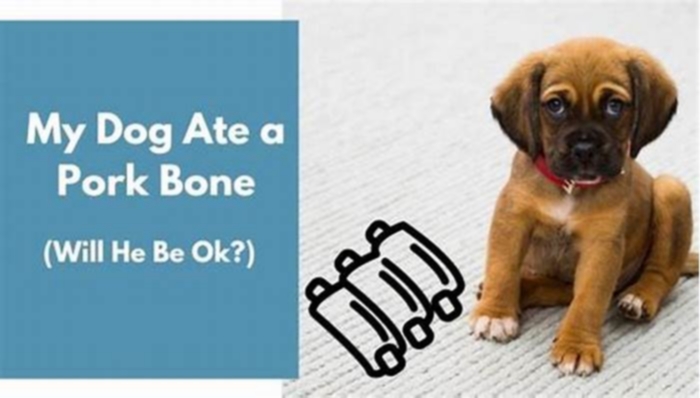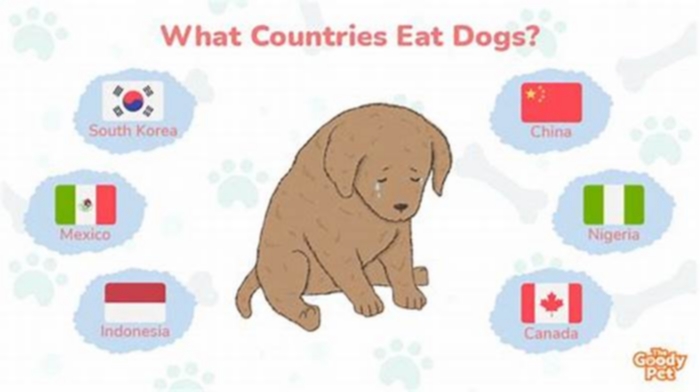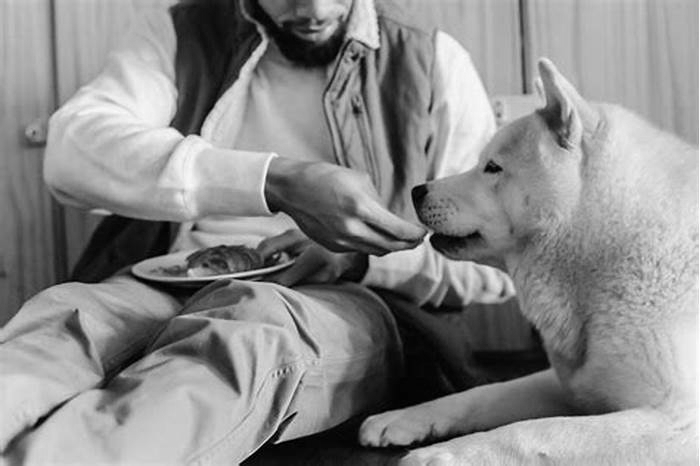What if my dog eats only once a day
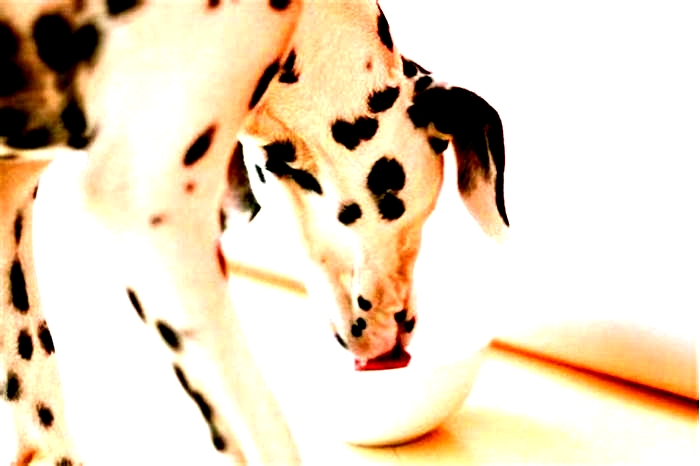
My Dog Only Eats Once A Day Should I Be Concerned?
Wild dogs and wolves are scavengers and eat when food is available because they dont know when they might find their next meal. They adapted to eating vast amounts in one sitting, gorging while they had the chance. Leftovers (if there are any) are then buried in the ground to try and preserve them for a later time.
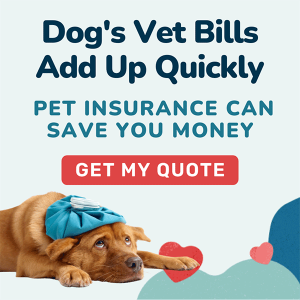 Advertisement
Advertisement Domestic dogs have evolved considerably from their wild counterparts a tiny chihuahua with its small stomach probably tends to graze a bit more daintily than a wolf, for example. Veterinarians recommend feeding your adult dog twice daily, with puppies needing their daily rations divided into three or more meals a day.This tends to help with satiety (the feeling of fullness), leading to less begging for food between mealtimes, as well as ensuring your dog is receiving adequate nutrition.
When you give your dog his meal, you should make sure he is somewhere quiet so that he can eat undisturbed and without competition or distraction from others. Fresh water should always be available too.
What Should I Look for in a Diet?

You should look for a good-quality commercial diet thats suitable for your dogs age and sizeto ensure he gets the right balance of nutrients. Select a food that is certified by the Association of American Feed Control Officials (AAFCO) to give you extra confidence. AAFCO is a voluntary membership association made up of individuals who regulate animal feed sales and distribution. It helps to define common ingredients and nutritional requirements for pet foods.
Dog food manufacturers ordered ingredients by decreasing amounts. A good-quality animal protein source (either whole meat or meat meal) should make up the bulk of the diet, with lower amounts of carbohydrate ingredients. A complete dry kibble should give your dog all of the nutrients he needs, but some dogs may find wet food a bit more palatable, so consider mixing this with his biscuits if he is fussy.
Is It Ok To Feed a Dog Once a Day?
Its not ideal to only offer food once a day veterinarians might recommend splitting your dogs daily rations into two separate portions. This tends to keep dogs more satisfied and can help with weight control. We know that a healthy dogs stomach takes around 6 to 8 hours to empty, which means that a dog fed in the morning is likely to be hungry by evening time. However, some pet parents like the convenience of feeding once daily.
It is worth noting that there is a slightly increased risk of gastric dilatation-volvulus (GDV)when feeding a dog one large meal a day rather than a couple of smaller ones. A large meal is more likely to cause gastric distension and bloating, increasing the chances of this serious condition occurring. However, there are other risk factors at play, such as the breed and size of the dog. Feeding one large meal doesnt mean your dog will get a GDV, but it is something to watch.
Some schools of thought suggest that only feeding once daily could lead to a hungrier and more irritable dog, contributing to aggression or anxiety issues.
Dont forget that it is advisable to feed young puppies even smaller meals, ideally splitting their rations into three or four portions a day. They wouldnt cope well with one big meal, as their small tummies couldnt hold all their daily rations in one go.
What Should I Do If My Dog Doesnt Eat?

You could try the following tips to encourage him to eat better.
Feed Your Dog in a Quiet Place
Dogs are easily distracted and can struggle to concentrate on eating, especially if several other animals or people are around. Try and feed them on their own in a quiet area of the house where they can focus on their meal in peace.
Make Sure He Has a Good-Quality Diet
Ensure your dog has good-quality food with high protein and lower amounts of carbohydrate and filler ingredients. Foods that contain a healthy portion of animal fat rather than vegetable fats tend to be quite tasty to dogs too.
You might also consider adding a fresh, human-grade food like The Farmers Dog to the mix. It is prepared in a USDA-certified kitchen with real meats and fresh produce, then fresh-frozen and shipped to your door, based on the personalized recommendations for your unique dog.
Try Moistening The Kibbles
Some dogs prefer the texture of moist food. You could try soaking the kibbles in some warm water for a short time before feeding to soften them.
Feed Your Dog After Exercise
Exercise helps stimulate appetite, so consider offering your dog his food after hes been out for a walk. Feeding after rather than before activity may also help decrease the risk of gastric dilatation-volvulus.
Add Some Wet Food
If you have already tried the other tips above, you could try adding some wet food to his kibble to encourage him to eat. Many dogs find wet foods quite palatable, and they contain a high protein content. However, they come with the disadvantage of being a bit smellier and messier to feed.
Establish a Routine
By setting a routine, you can help your dog know what to expect from his day, and he can start to anticipate mealtimes. You should put your dogs food down, and if he doesnt eat it within 15-20 minutes, then you should take it away again. Offer him his next bowl of food at the next scheduled mealtime, when hopefully he is feeling a bit hungrier.
Dont leave food down all day as it establishes poor habits and can lead to your dog picking and grazing. This makes it harder to monitor his intake. Dogs are also not very good at self-regulating, so weight gain could occur.
When Should I Take My Dog to the Veterinarian?

You should always take your dog to the veterinarian if you have any concerns, especially if its unusual for them to have a reduced appetite. Many dogs often only eat one meal a day, whereas, for others, this could be a new behavior indicating ill health.
Other symptoms that would indicate a problem include:
- Vomiting
- Diarrhea
- Lethargy
- Fever
- Weakness
- A painful abdomen
Your vet will start by taking a more detailed history from you and performing an examination of your dog to check him over. If your vet has any concerns, they may recommend further tests to pinpoint the cause of your dogs reduced appetite. This could include blood and urine samples and diagnostic imaging like x-rays or ultrasound.
Frequently Asked Questions
What is the best time to feed a dog?
Vets recommend feeding your dog twice daily if possible, usually in the morning and evening. But, make sure he doesnt eat too late because dogs need a few hours to digest their food and go to the bathroom if needed before bedtime.
Should I feed my dog before or after a walk?
It is thought that feeding your dog after a walk has several benefits. Exercising your dog on an empty stomach may help reduce the risk of bloating and gastric dilatation-volvulus. Additionally, walking him before mealtimes may help stimulate appetite and make him more likely to eat when he gets back home. This can be helpful with picky eaters.
What is the best feeding schedule for dogs?
You should feed adult dogs two meals a day, one in the morning and one in the early evening. This is usually before and just after work for most people. Puppies need an additional meal around lunchtime. Fresh water should be available at all times.
Should I leave food out for my dog all day?
No, it is best to try and establish set mealtimes for your dog. Try setting his food down for 15-20 minutes, and if he hasnt eaten it in this time, then take it up and offer it again at the next scheduled mealtime. Leaving food out all day makes it harder to monitor how much he is eating, plus it might attract pests, especially if he is on a wet food diet.
Is it bad to feed a dog late at night?
Its not ideal, as your dog may not have time to go out to the toilet following his dinner. He is much more comfortable overnight if hes had a chance to digest his food and pee and poop before going to sleep. Giving your dog an energy boost late at night is not ideal either, so try and feed them around three hours before bed.
Final Thoughts
In most cases, only eating one meal a day is just a sign that your dog is a bit picky or fussy with his food. By trying some of our tips, you may be able to encourage him to move to two meals a day, which tends to be the regime recommended by most veterinarians. If your dog is showing any signs of ill health, get them checked over by a vet to confirm no underlying issues that might affect appetite.
Above all, feeding a complete, good-quality diet that is high in animal protein is the best way to meet your dogs needs. And, as a bonus, it also encourages them to look forward to mealtime.
My Dog Eats Once a Day Is That Normal?
If your dog only eats once per day, you may be worried that your pup isnt getting the nutrition they needor, worse, that they may be ill. Dont stress. This problem is more common than you might think, and there are easy solutions available.
As a dog expert, I get asked about this all of the time.
The fact is that most veterinarians recommend dogs consume two meals per day, spaced approximately 12 hours apart. Puppies should eat even more frequently, aiming for three feedings per day.
In this article I will explain
- How often a dog should eat
- Why once a day eating can sometimes be a problem
- What to do when your dog refusese to eat
- Should you leave unfinished dry dog food out?
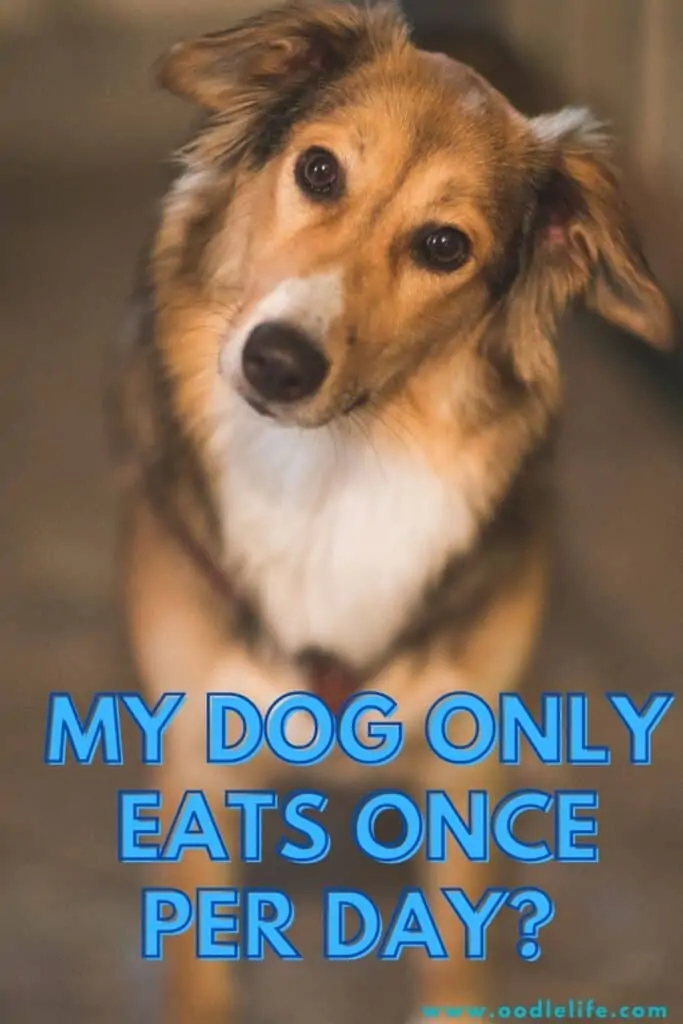
Is your dog not meeting those requirements? Weve done the research and come up with actionable tips to help you improve your pups eating regimen. Heres what to know about dog feeding times and how you can optimize your dogs eating schedule.
How Often Should a Dog Eat In a Day?
First, lets preface all of this by saying that the twice-a-day rule is general. The perfect amount of feeding times in a day depends on diverse factors, like the dogs breed, size, weight, physical health, and age.
A veterinarian can provide precise guidelines regarding how frequently your furry friend should eat. That said, its good to know the general rules of thumb when it comes to dog eating routines. Heres what the experts recommend, according to our research.
Adult Dogs
An adult large sized dog should eat at least two square meals per day. These meals should consist of high-quality dog food with the appropriate calories and nutrients to maintain energy levels and health.
Puppies
The average puppy should eat three to four times per day. The food should consist of a puppy-friendly formula with the vitamins and minerals pups need to grow strong. Note that puppies generally relieve themselves within 15 minutes of eating, so be prepared to go out!
Why a Single Meal Per Day Can Be a Problem
So, is eating just one meal per day a problem? It can be. For puppies, a single feeding wont be enough to maintain energy levels and healthy growth. They need more fuel than an adult dog to nurture their developing bodies.
Meanwhile, adult dogs may become more anxious or irritable if theyre only fed once per day. They may get aggressive and be more prone to behavioral issues, like chewing on furniture or acting violently towards people or animals.
Further, note that adult dogs can empty their stomachs within eight hours. After this point, their stomach will send a hunger trigger to the brain. This can cause the dog to overeat when they get food, resulting in health issues like bloating and gastrointestinal problems.
What Should You Do If Your Dog Eats Only Once a Day?
So, your dog only eats once a dayand you think thats a problem. But what can you do about it? If youve tried feeding your pup a second time per day and they dont seem interested, you might assume this is a lost cause. Its not, we promise. Follow these tips to help.
Rule Out Health Problems
Before you do anything else, take your four-legged family member to the veterinarian for a checkup. You want to rule out possible health issues that could be causing a lack of appetite. Possible causes of lack of appetite include infection, intestinal blockage, pancreatitis, or cancer.
Dont worry: Odds are your dog is perfectly healthy! Its simply better to double-check before proceeding. Further, your veterinarian will be able to offer helpful advice about changing your dogs feeding routine, such as recommending an appropriate kibble. So, make that appointment.
Adjust Your Dogs Feeding Times
If your dog insists on a single meal per day, it may be time to rethink your feeding times. If they are currently only eating once daily, add another high-quality meal. However, make sure to leave 12 hours between meal times. Otherwise, your dog wont have much appetite.
Further, time your meal appropriately. You might try feeding your dog after their walk, for example. Theyll likely be hungry after getting some exercise and eager to eat. You can also try feeding them after a rousing round of playing a game like fetch.
Limit Feeding Time
Its not just when your dog eats that matters. The amount of time you give them to chow down is another factor. Some dog owners like to leave kibble out for their dogs all day. However, this impedes portion control efforts (not to mention, leaving dry food out attracts pests like rats).
Carve out precise time frames when your dog should be eating and give them a set amount of time for their meal. Keep your eye on the clock and cap their mealtime to about 30 minutes. After this point, cut them off and throw out what isnt eaten.
Improve Your Pups Portion Control
Limiting mealtime will also make it easier to control your dogs portions. If your dog eats one giant meal once per day, they may not want more later. Limiting their portion sizes will allow them to distribute their eating across a larger window of time.
Just how much should your dog be eating? It depends. Start by asking your vet what your pups ideal weight is and determining how far off they are. You can then calculate how much they should eat based on their current weight and whether they need to lose or gain pounds.
Change Your Dogs Food
Sometimes a dogs lack of interest in food is down to something as simple as the type of food theyre getting. If your dog lacks appetite, try changing up its chow. Look for foods with natural, human-grade ingredients, and always read the nutrition label.
The dog food market has changed significantly in the past years, as pet owners turn to organic goods sans contaminants. People are starting to embrace the idea that their pets deserve just as high-quality food as their humans. As a result, there are many great options.
Rethink Your Approach to Treats
Heres another simple reason why your dog may not have an appetite for a second meal at days end: Youre overfeeding them treats! Your pup undoubtedly loves treats, and they can be a great help for training. However, treats shouldnt replace meals.
Treats should never make up more than 5 to 10% of your dogs everyday diet. If you like to use treats frequently, for example, for training, you can minimize this by breaking them into smaller pieces. This still allows you to provide a reward without overloading your pup with goodies.
Communicate Changes to Your Dogs Routine to Others
If you make any changes to your dogs diet, always verify them with your veterinarian. Further, make sure to communicate any adjustments to other people who care for your dog, including family members, pet sitters, boarding kennel staff, and groomers.
Why does this matter? You dont want another persons well-intentioned actions to interfere with your efforts to get your dog on a different feeding schedule. For example, if your pet sitter typically provides loads of treats during the day, this can ruin your dogs appetite at night.
The Final Word: My Dog Eats Once a Day. Is This a Problem?
If your dog is only eating once per day, you may have cause for concern. This isnt an ideal feeding schedule and can cause issues, such as behavioral problems like increased aggression. Ideally, your adult dog will eat twice per day (while a puppy will eat three to four times daily).
The great news is that its possible to adjust your pups eating routine. The tips above cover some of your options. From changing when you feed your dog to limiting treat intake during the day, there are many small and straightforward steps you can take to make a difference.
Whatever tactics you try, make sure to run them by your veterinarian first. An animal health professional can also rule out medical reasons for your dogs unusual eating habits. Taking this holistic approach will ensure you are doing all you can to safeguard your canines wellbeing.

